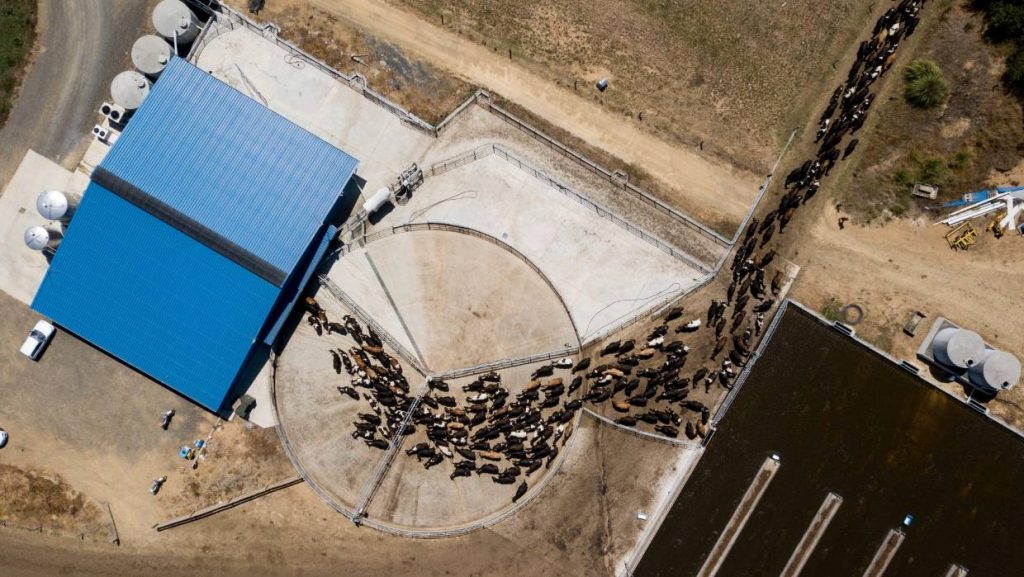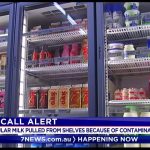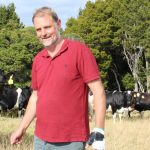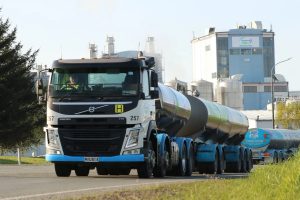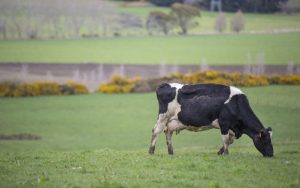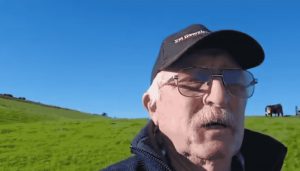
With just light rain forecast next week , many farmers are trying to destock, but the extra supply is flooding meat processors.
Some face a three-week wait to have their animals sent to the works.
The wait is also due to the extended Chinese New Year, prompted by the coronavirus disease. It has slowed produce including meat from entering China, New Zealand’s key export market, until the workforce there restarts.
Some dairy farmers, like Matamata’s Jersey Girl Organics, are drying off their cows early while others are harvesting arable crops ahead of schedule as measures to deal with the dry weather.
Jersey Girl is a family farm on Hinuera Rd and is home to about 220 jersey cows, half of which have already been dried off, farm owner John Vosper said.
The organic dairy farm had limited suppliers to source extra feed.
“It [the dry spell] has come quite early and quite quickly. We had rain after Christmas and it was all looking nice and green and then very quickly the feed has dried up,” Vosper said.
“It’s a bit of a challenge because we calf in the autumn as well, so we’ve got cows that are calving and we’ve got no fresh feed for them.”
The herd grazes on organic pasture, supplemented with hay, silage and maize cut from the farm’s own paddocks.
The farm normally had about three weeks of extra feed on standby. It also planted diverse pastures which could handle different weather conditions.
Vosper said continued dry weather could reduce the farm’s supply of good quality supplements for cows and their calves.
“It’s not as easy for organic farmers to source high quality feed as it is for conventional farmers.”
Waipā dairy farmer Philip Dench is also watching his feed levels and among those waiting to destock.
“Basically we have to book in today at the works, to get the stock in before March, that’s a hell of a long time to wait.
“It’s only going to get worse, the coronavirus is something that’s out of our hands.”
Dench runs about 700 cows on his Crossroads dairy farm, at Te Kawa, south of Te Awamutu.
“The number one rule around planning for summer is to make sure there is enough feed supplements on hand.
“It’s part and parcel of farming but the dry weather has hit us a bit earlier this year.”
Managing water supply is another challenge.
“Sometimes you do go over your resource consent, but what else can you do?
“You need to look after your stock, that’s where our income is coming from next year, it’s just bloody hard.”
A dairy plant upgrade in 2017 made the farm more efficient.
“We use a lot of green [effluent] water, to flood-wash the yard and feed pads.
“We only use fresh water to clean the hoses and cups on the milking platform.”
Further south in the King Country, Mitchel Hoare agreed the combination of an early dry season and the economic fallout from the coronavirus made for a “perfect storm”.
Hoare is second in charge on Moketenui Station about 26km south of Te Kuiti.
He is also the Waikato Regional Young Farmer of the Year competition winner and heads to Christchurch in July to contest the final.
For now, matters are a bit closer to home, managing the farm through to autumn.
“We are trying to get rid of as many prime stock as we can but the extended Chinese New Year meant the market was closed and now the meat processors are being flooded with stock.
“We’re running out of places to send our stock, everyone is in the same boat.”
Moketenui Station is on steep high country so feeding out supplements isn’t an option.
A river running through the heart of the station is also lower than normal for this time of the year.
“The only tools we have are reducing stock or relocating feed to top priority stock.
“You can look after the soil, don’t over graze it and just hope things are going to turn around.”
NIWA meteorologist Seth Carrier said soil moisture levels across the North Island were well below normal.
Much of Waikato is scorched brown, but northern Waikato, Auckland and Northland are suffering the most, Carrier said.
“All of Waikato, other than the south-east sections, vary between extremely dry soil to severe drought condition.
“Generally speaking it gets worse the further north you go. Northern Waikato is looking at between 30-60mm of rainfall below normal.”
The region has experienced on and off showers, but Carrier said at least for the next 10 days, it’s very unlikely conditions will change.
A tropical cyclone in New Caledonia is expected to blow over New Zealand, but much of that rain will only reach the South Island.
There may, however, be “hope on the horizon” going into March.
“We may have a better shot of a couple of instances of rain coming through perhaps in the early weeks of March, but this far out, it’s hard to tell which part of the island that will effect.”
